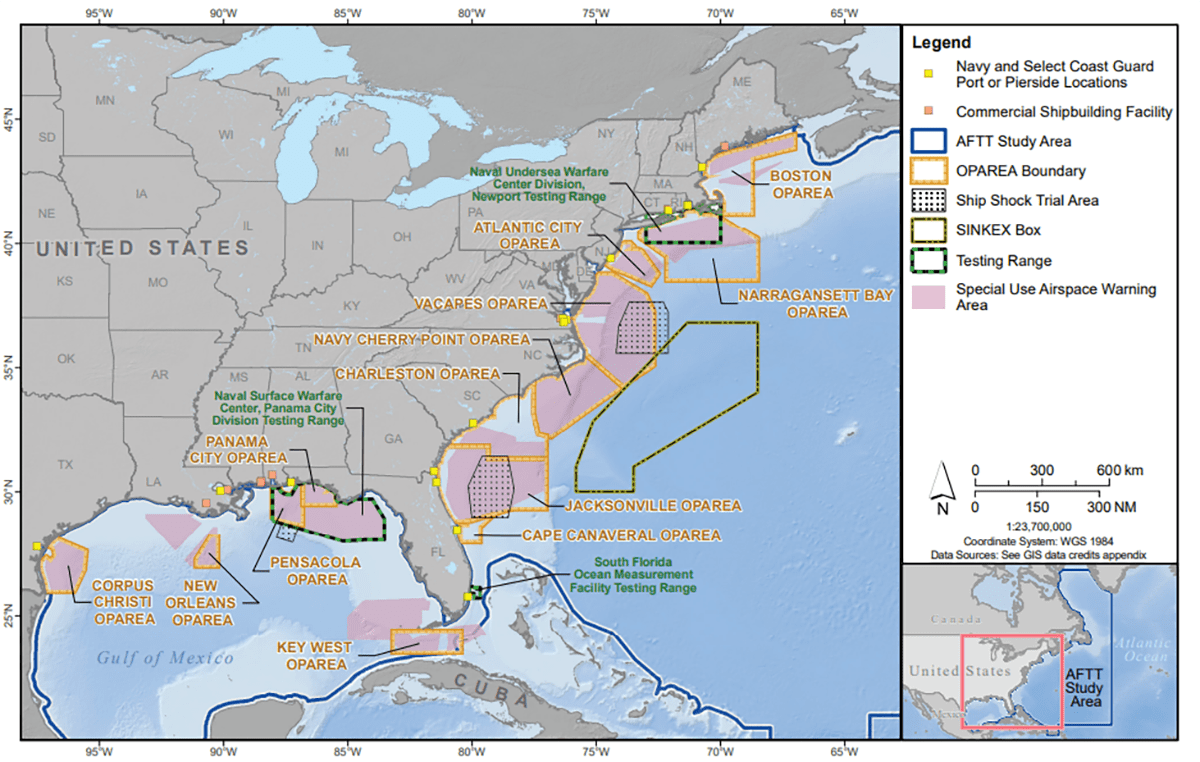
The Department of the Navy and the Coast Guard have submitted a draft environmental impact study to carry on longstanding offshore training activities along the East Coast, the Gulf of Mexico and portions of the Caribbean Sea.
A 60-day public comment period on the draft supplemental environmental impact statement/overseas environmental impact statement, filed with the U.S. Environmental Protection Agency, began Friday.
Supporter Spotlight
Military officials prepared the draft statement to update and replace federal regulatory permits and authorizations set to expire November 2025 for offshore training.
The draft supplemental environmental impact statement “evaluates the reasonably foreseeable effects on the human environment of Navy, Marine Corps, and Coast Guard training and testing activities conducted within the Atlantic Fleet Training and Testing (AFTT) Study Area.”
The study area includes the western Atlantic Ocean along the East Coast of North America, the Gulf of Mexico and portions of the Caribbean Sea. The National Environmental Policy Act, or NEPA, requires federal agencies to consider potential environmental effects of their proposed activities.
The Navy, Marine Corps and Coast Guard plan to conduct training, research, development, testing, and evaluation activities that include the use of active sonar and explosives within existing range complexes, testing ranges and other areas offshore. Those activities will also be conducted at Navy pierside locations and port transit channels, near civilian ports, and in bays, harbors and inland waterways, such as the lower Chesapeake Bay.
Officials said the training activities “are generally consistent with those analyzed in the AFTT EIS/OEIS completed in 2018 and are representative of training and testing that has been conducted in the AFTT Study Area for decades.”
Supporter Spotlight
Since the 2018 impact statement was completed, “the best available science has been updated, the regulatory environment has changed, the Study Area has changed, and what is known about our impacts has been refined,” officials said. The updated information has been incorporated into the new draft analysis.
The National Oceanic and Atmospheric Administration’s National Marine Fisheries Service is a cooperating agency for the supplemental impact statement.
A NEPA website includes more about the project, and the public can view the draft supplemental statement and submit comments there. The documents are also available for review at the Onslow County Library, 58 E. Doris Ave., Jacksonville.
In-person open house public meetings are scheduled but none in North Carolina. However, virtual public meetings via Zoom are also scheduled for 6-7 p.m. Oct. 22 and 2-3 p.m. Oct. 24. There, people can learn about the project and ask questions.
Public comments may be submitted electronically via a form at this website.
Mail written comments to: Naval Facilities Engineering Systems Command Atlantic, Attention: Code EV22SG (AFTT EIS Project Managers), 6506 Hampton Blvd., Norfolk, VA 23508-1278.
All comments must be postmarked or received electronically by 11:59 p.m. Nov. 21 for consideration in the final supplemental impact statement.







